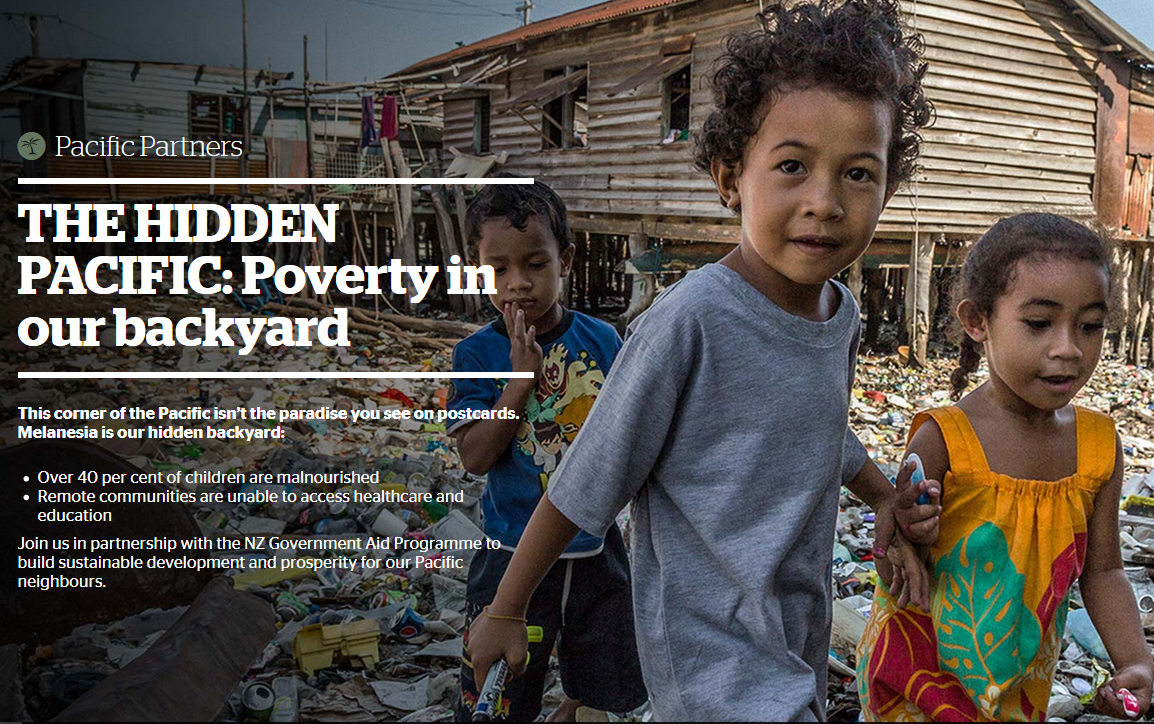
AUCKLAND (New Zealand Herald/Pacific Media Watch): The New Zealand Herald has launched a campaign this week against poverty in the Pacific with aid agency partner World Vision, publishing a series of stories and video reports from Papua New Guinea and the Solomon Islands.
In its launch introduction for the "Hidden Pacific" series on Saturday, the newspaper said: "Our Pacific neighbours urgently need your help.
"This isn't the paradise you see on postcards. In a hidden corner of the Pacific our Melanesian neighbours are isolated and vulnerable.
"These are some of the poorest countries in the world and too few Kiwis are aware of what's happening here. The Herald and World Vision are running a major campaign to raise funds for the immense and urgent needs in Melanesia.
"With your help we can make a difference to the children and their families who lack essential resources throughout this region.
Key problems
"The people of Melanesia live in isolated and dispersed communities that makes access to resources and services incredibly difficult," says the Herald.
"There is little economic opportunity and the majority of the populations are subsistence farmers or fishers. In the region one in four families live in poverty:"
Papua New Guinea ranks 158 on the Human Development index, the Solomon Islands 156, while New Zealand ranks 9. Vanuatu was ranked as the most at risk country to natural disaster in the world. Many communities have alarming health indicators similar to countries in sub-Saharan Africa.
- Low levels of health and nutritional knowledge: There is significant child malnutrition in the region. A lack of health and nutritional knowledge, particularly in relation to breastfeeding, young child feeding practices, and sanitation is a major contributing factor to poor child and maternal health.
- Chronic diseases: Papua New Guinea has some of the highest rates of TB in the Pacific, and the disease is increasingly becoming drug resistant. Because of lifestyle changes, most Pacific countries are facing a double burden of disease, with infectious diseases such as malaria, infectious diarrhoea and dengue fever remaining as significant health issues, while the incidence of non-communicable diseases such as cancer and diabetes is increasing rapidly. This creates additional health risks for the population and places pressure on health resources.
- Health inequities: There are considerable disparities between health services and access to rural and urban communities and wealthy and poor areas. Indicators of child health are much worse in rural areas in Vanuatu and Papua New Guinea, where the reach of the national health care system is limited to the services provided by poor quality dispensaries and aid posts. The costs of health services are also a barrier to adequate health care.
Other issues include:
- Limited and inequitable distribution of human resources for health and nutrition
- Gender based violence and discrimination
- Water and sanitation
- Geographic challenges and limited infrastructure
- Barriers to education, particularly for women
- Urbanisation
- Natural disasters and climate change
Yesterday, the Herald ran a feature spread on alarming lack of resources and medicines at clinics near the remote township of Bogia in Madang province.
Today, problems with the fisheries industry and remote communities were highlighted.
The full "Hidden Pacific" series
This work is licensed under a Creative Commons Attribution-NonCommercial 3




